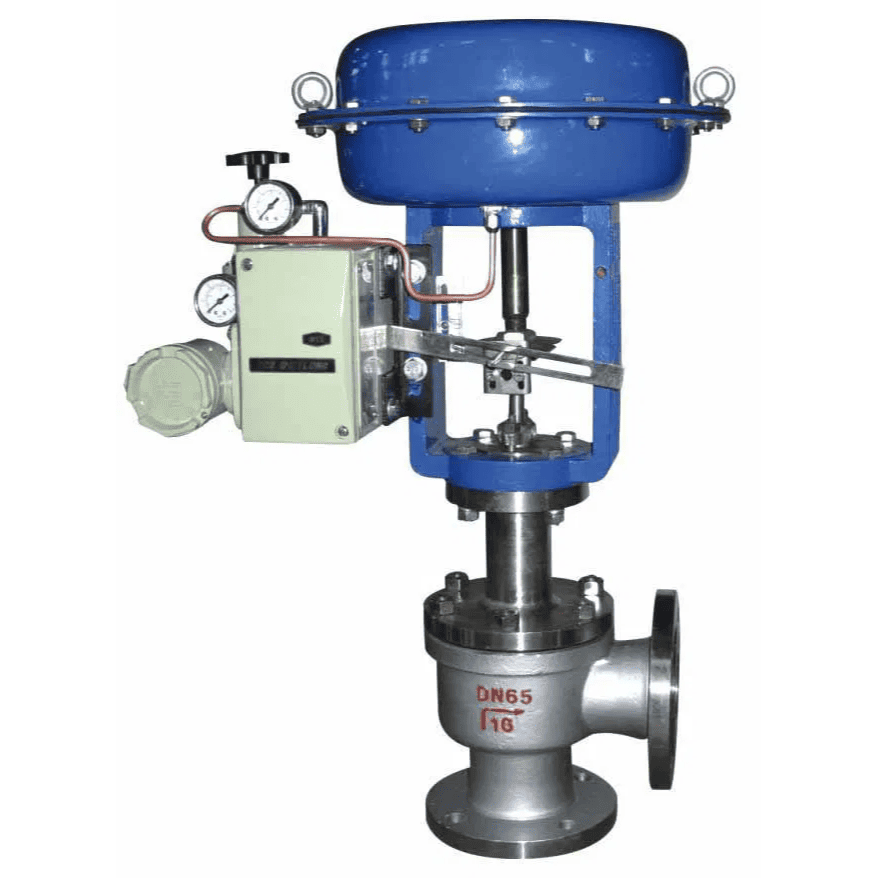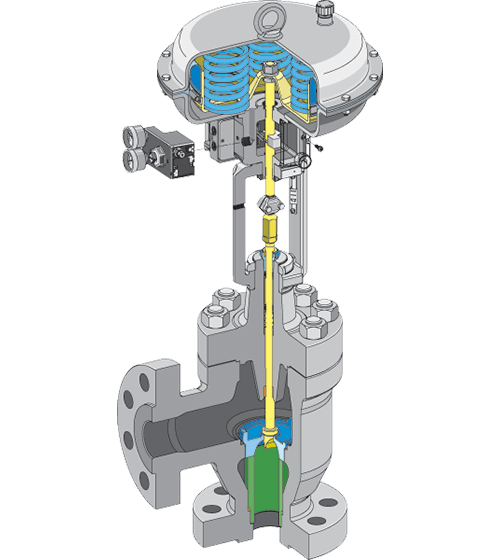
An angle control valve, often referred to simply as an angle valve, is a specialized type of control valve designed to manage and regulate the flow of fluids or gases within industrial systems. Its unique angled body design, typically featuring an inlet and outlet arranged at a 90-degree angle, sets it apart from other control valve types, making it highly suitable for applications requiring precise control, high-pressure resistance, and durability.
Angle control valves are frequently used in industries such as oil and gas, petrochemicals, power generation, chemical processing, and water treatment. Their versatility enables them to handle various demanding applications, including pressure letdown, flow control, level regulation, and service in corrosive and erosive environments. This guide delves into the functionality, benefits, types, applications, and key considerations when selecting an angle control valve.
An angle control valve is a type of industrial control valve engineered to regulate the flow of fluids or gases by adjusting the valve’s internal components. Unlike globe valves, which are typically straight-through in design, angle control valves feature an inlet and outlet arranged at a 90-degree angle. This configuration not only minimizes pressure drop but also reduces erosion in applications involving high-pressure fluids or abrasive media.

The angle control valve operates based on a throttling mechanism that adjusts the valve opening to control fluid flow. The valve’s internal trim—comprising the plug, seat, and cage—works together to modulate flow as the valve stem moves. The plug moves vertically, varying the size of the flow path and enabling precise control over fluid or gas flow rates.
Key components of an angle control valve include:
Valve Body: Houses the internal components and provides structural integrity.
Trim (Plug, Seat, and Cage): Determines flow characteristics and enables throttling.
Actuator: Converts control signals into mechanical movement to operate the valve.
Bonnet and Stem: Support the plug and connect it to the actuator.
Seat Ring: Ensures a tight shut-off when the valve is closed.
The valve’s design enables efficient flow regulation, even in challenging conditions such as high-pressure drops, flashing, or cavitation.
Angle control valves are engineered to offer superior performance and reliability in demanding industrial environments. The unique angled design provides several benefits over traditional control valve types:
Angle control valves offer excellent shut-off performance, with options available from ANSI Class IV to VI, ensuring a reliable seal even in high-pressure applications. This tight shut-off capability is essential for preventing leakage, reducing energy losses, and maintaining process safety.
One of the standout features of angle control valves is the ability to easily change capacity and flow characteristics. By simply replacing the internal cage, users can switch between reduced and full-sized capacity trims or between linear and equal percentage flow characteristics. This flexibility makes angle control valves suitable for a wide range of applications.
Maintenance is a crucial consideration in industrial operations, where equipment downtime can result in significant costs. The top-entry design of angle control valves allows for easy access to internal components. The cage-retained seat ring facilitates quick inspection, repair, or replacement of the trim without the need for extensive disassembly. This feature reduces maintenance time and costs.
Angle control valves are often used in harsh environments where exposure to corrosive or sour gas is common. The availability of a wide range of body and trim materials ensures compatibility with corrosive fluids, meeting stringent industry standards such as NACE MR0175/ISO 15156. This makes angle control valves ideal for applications in the oil and gas sector, where sour gas is prevalent.
In high-pressure and high-velocity applications, cavitation and erosion can damage valve components, leading to performance issues and costly repairs. Angle control valves are specifically designed to handle these challenges by using hardened materials and optimized flow paths. The angled design directs flow away from vulnerable components, reducing wear and prolonging service life.
Angle control valves come in various types and configurations to suit different applications. Each type offers unique advantages and is suited to specific operating conditions:
This type is the most common and features a 90-degree body design for efficient flow control. It is ideal for applications requiring pressure letdown and flow regulation.
Designed to handle high-pressure drops and eliminate cavitation, this valve type uses special trim designs to control pressure drop and dissipate energy gradually. It is commonly used in applications involving flashing or high-pressure differentials.
This valve type incorporates noise-reducing features, such as labyrinth trim or multi-stage pressure reduction, to minimize sound levels in high-pressure gas and steam applications. It is widely used in power plants and chemical processing facilities.
Built for extreme conditions, these valves feature durable materials, hardened trim, and specialized designs to withstand harsh environments. They are often used in oil and gas, mining, and chemical industries.
Angle control valves are versatile components used in a variety of industrial applications, including:
Pressure Letdown: Managing high-pressure differentials by gradually reducing pressure to safe levels.
Flow Control: Precisely regulating the flow rate of fluids or gases.
Level Control: Controlling fluid levels in tanks and vessels.
Steam Conditioning: Reducing pressure and temperature in steam systems.
Corrosive and Sour Gas Applications: Handling aggressive fluids in compliance with NACE standards.
Flashing and Cavitation Service: Preventing damage caused by rapid phase changes in fluids.
When choosing an angle control valve, consider the following factors to ensure optimal performance:
Process Conditions: Analyze pressure, temperature, flow rate, and media characteristics.
Valve Size and Trim Selection: Select the appropriate trim for accurate flow control.
Material Compatibility: Ensure body and trim materials are compatible with the process fluid.
Shut-Off Class: Choose the right shut-off class based on application needs.
Service Environment: Evaluate exposure to corrosive or erosive media.
Compliance Standards: Verify compliance with industry standards, such as NACE MR0175/ISO 15156.
Angle control valves are indispensable in industrial applications requiring precise flow control, pressure letdown, and handling of challenging media. Their unique design, versatility, and robust performance make them ideal for high-pressure, corrosive, and erosive environments. By offering reliable shut-off, easy maintenance, and adaptability to different flow characteristics, angle control valves enhance efficiency and safety across various industries.
Choosing the right angle control valve involves understanding your specific process requirements, selecting appropriate materials, and ensuring compatibility with industry standards. With the right valve, operators can achieve efficient, safe, and cost-effective control over their processes. As industries continue to evolve, angle control valves remain a critical component for achieving optimal performance in complex and demanding environments.